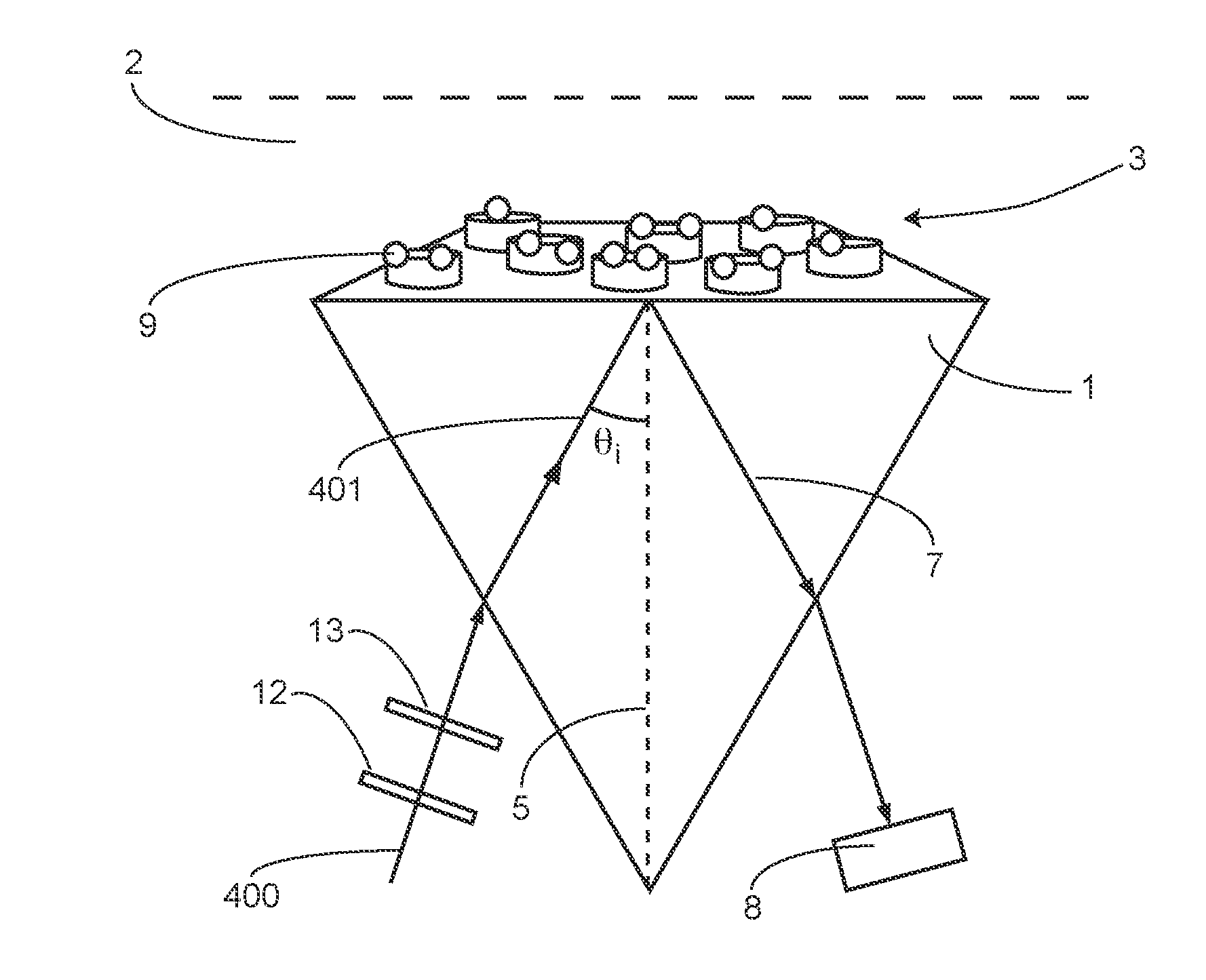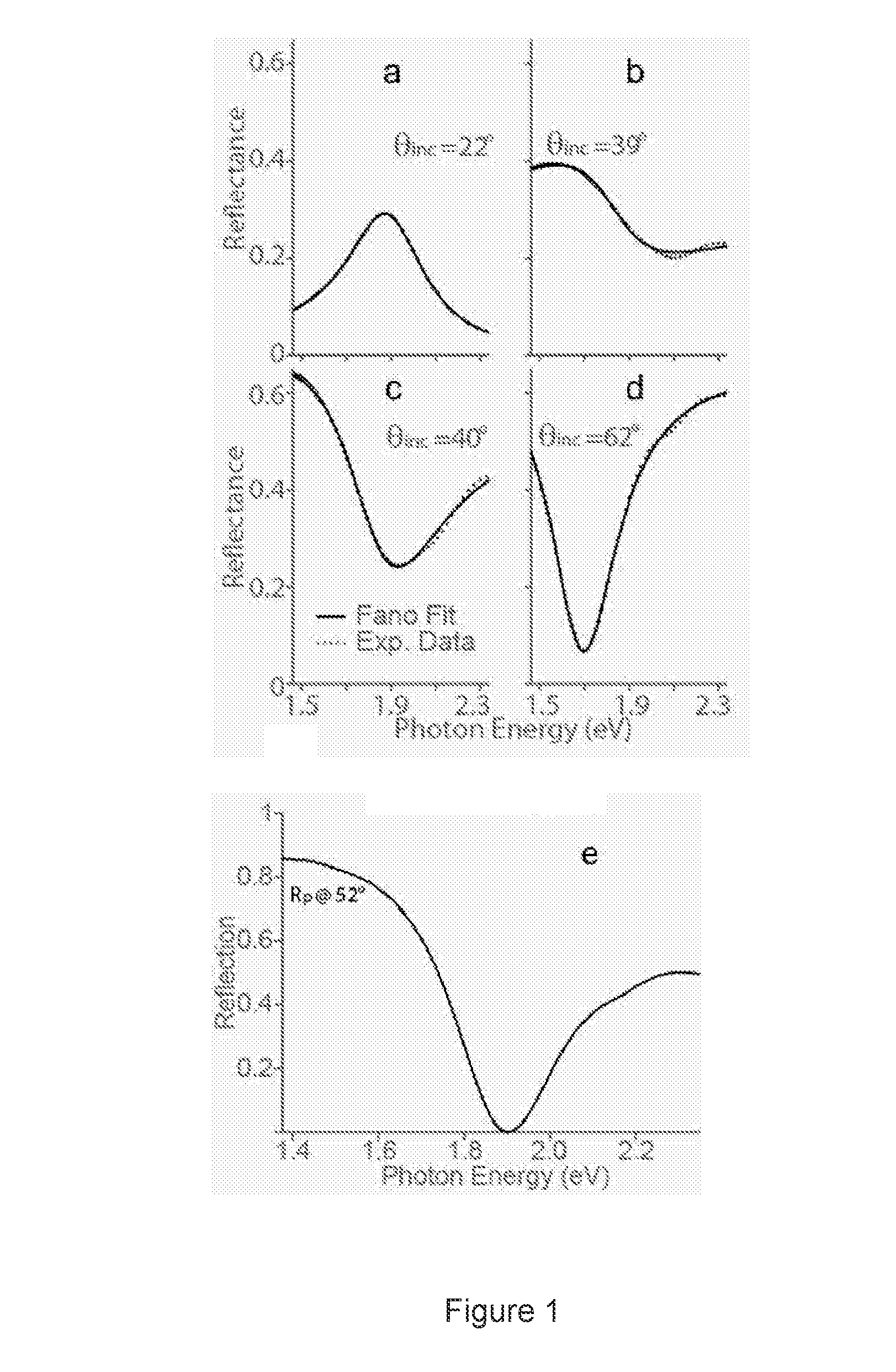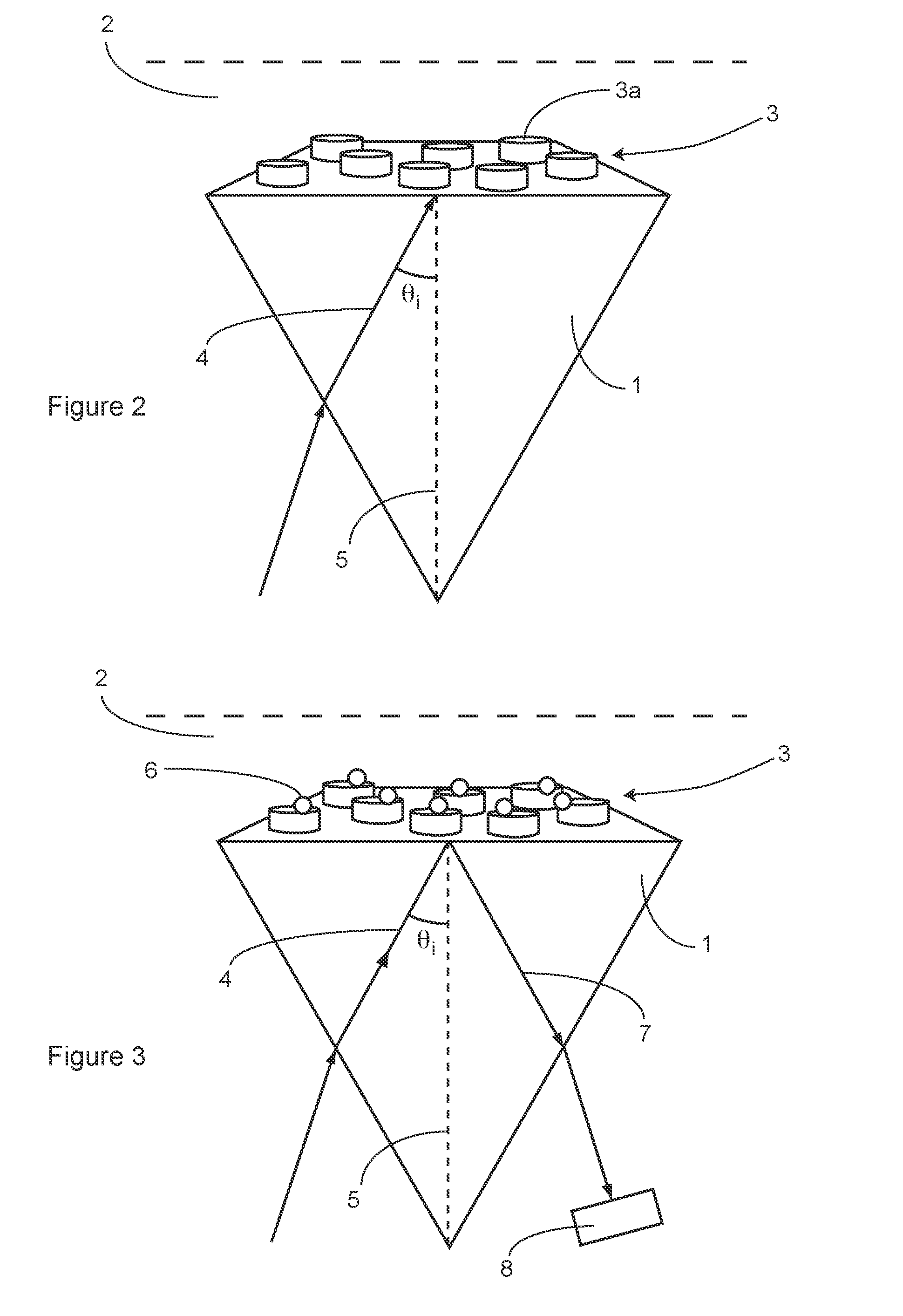Method for exciting a sub-wavelength inclusion structure
- Summary
- Abstract
- Description
- Claims
- Application Information
AI Technical Summary
Benefits of technology
Problems solved by technology
Method used
Image
Examples
Embodiment Construction
[0051]When a dielectric boundary with a plurality of small (in relation to the wavelength of the light) inclusions is illuminated above the critical angle, the collective coherent scattering of the inclusions interfere with the reflection from the boundary between the two media. At certain conditions, the components interfere completely destructively, and no light at all is reflected. And since the illumination takes place above the critical angle, no light is transmitted either. Instead, the incoming light is totally absorbed by the structure of small inclusions in the dielectric boundary.
[0052]In order to achieve total absorption in, the angle of the incident light to the boundary, θi, (i.e. in relation to the normal of the boundary) must fulfil the following relations:
[0053]For s-polarized light:
ωcρα(ω)=??+?cos??indicates text missing or illegible when filed
[0054]For p-polarized light:
ωcρα(ω)=-??+???,?indicates text missing or illegible when filed
[0055]where ω is the angular freq...
PUM
 Login to View More
Login to View More Abstract
Description
Claims
Application Information
 Login to View More
Login to View More - R&D
- Intellectual Property
- Life Sciences
- Materials
- Tech Scout
- Unparalleled Data Quality
- Higher Quality Content
- 60% Fewer Hallucinations
Browse by: Latest US Patents, China's latest patents, Technical Efficacy Thesaurus, Application Domain, Technology Topic, Popular Technical Reports.
© 2025 PatSnap. All rights reserved.Legal|Privacy policy|Modern Slavery Act Transparency Statement|Sitemap|About US| Contact US: help@patsnap.com



